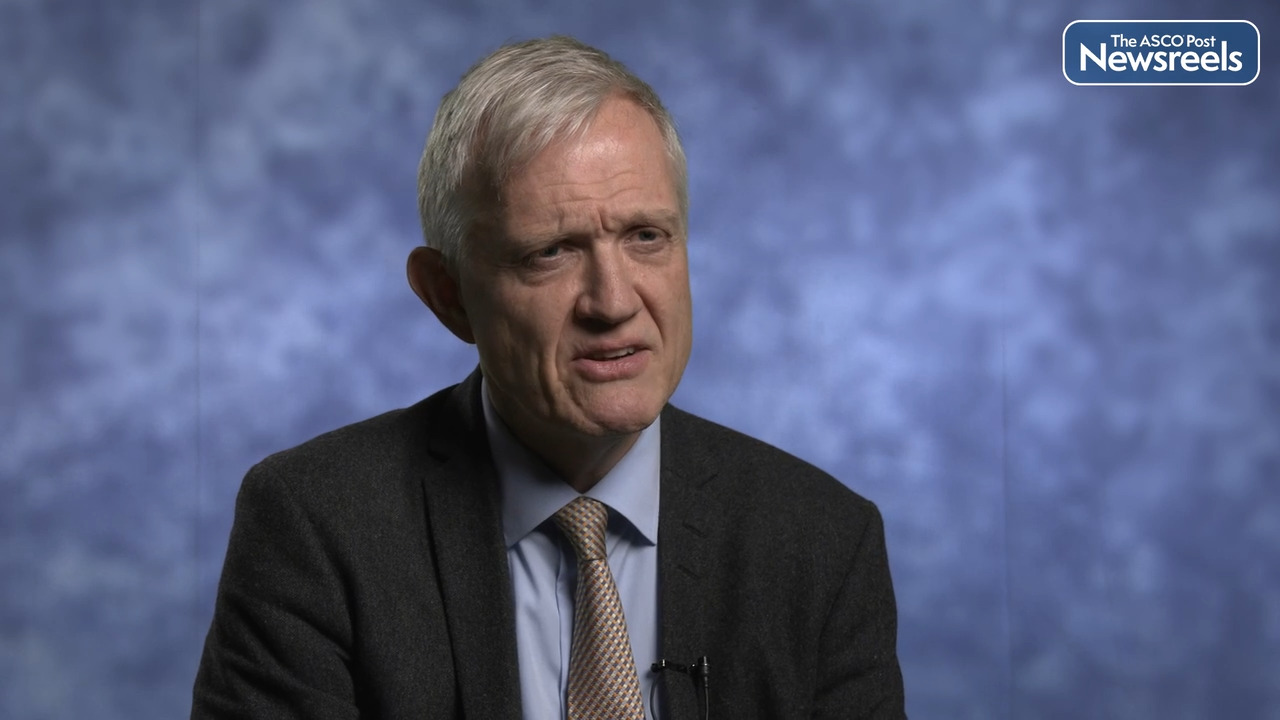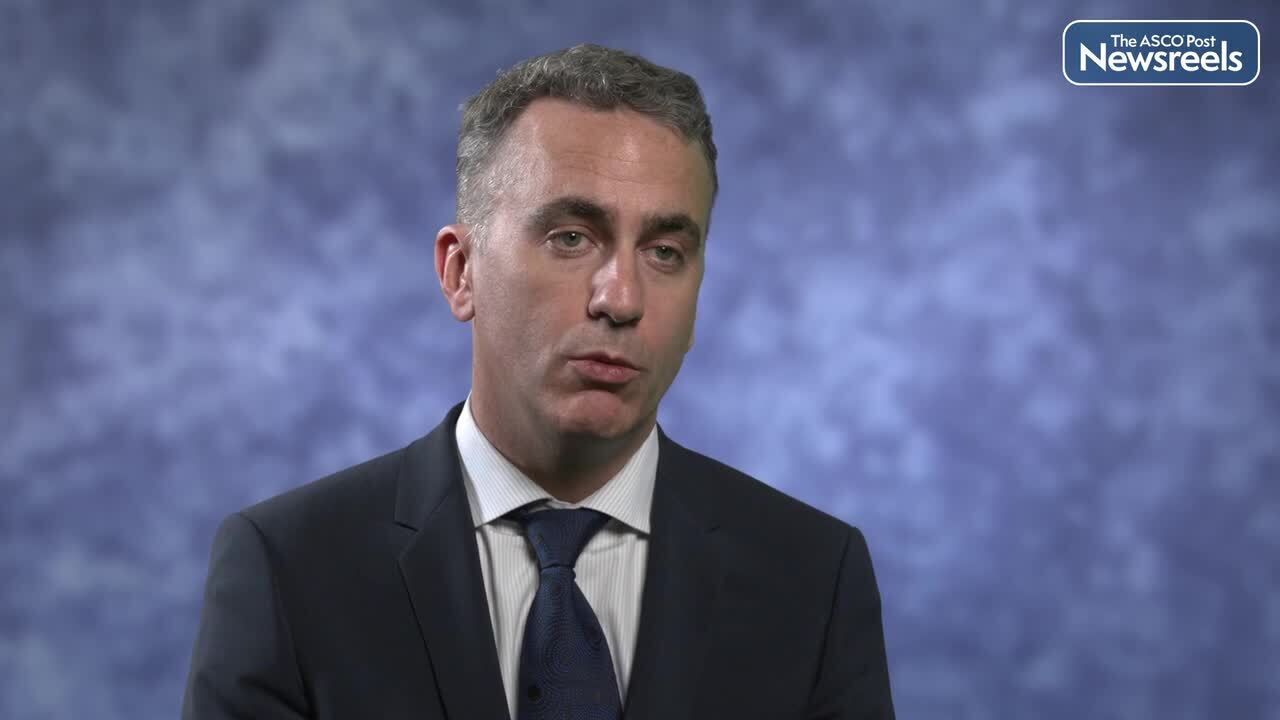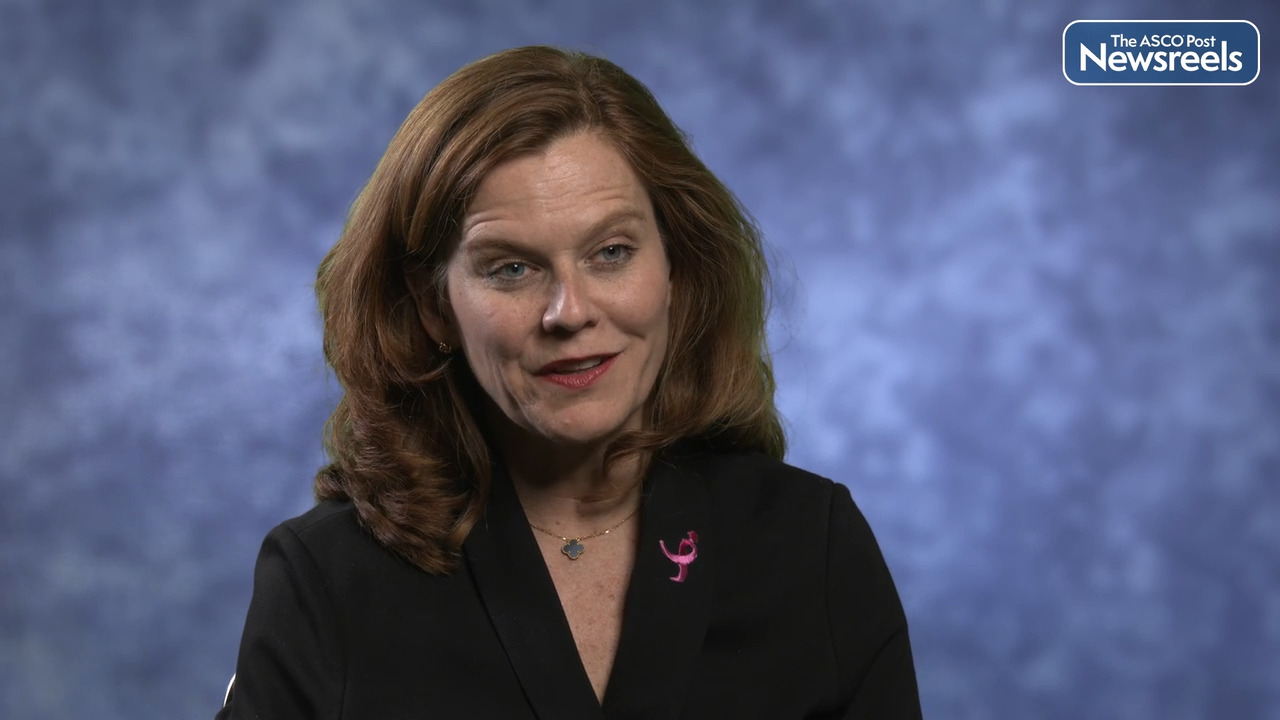Transcript
Disclaimer: This video transcript has not been proofread or edited and may contain errors.
My focus is premenopausal estrogen receptor-positive early breast cancer and looking at adjuvant endocrine therapies. And if we look back three decades or so, we learned early on that adjuvant ovarian ablation was an effective adjuvant endocrine therapy for premenopausal women. Subsequently, we learned that tamoxifen for five years was also a highly effective adjuvant endocrine therapy for premenopausal women.
When we looked at the effect of adjuvant ovarian ablation or suppression, it appeared that the effect on breast cancer mortality was somewhat less if the women also received chemotherapy, whereas with Tamoxifen, it appeared to have an additive benefit in women who had received chemotherapy for estrogen receptor-positive premenopause or breast cancer. One of the things we saw with adding tamoxifen after chemotherapy for premenopausal estrogen receptor-positive breast cancer was that there was an early improvement in disease-free survival, but overall survival improvement was slow to emerge and emerged beyond the five-year time point.
More recently, we conducted a randomized trial called the Soft Trial Suppression of Ovarian Function Trial, and it actually started almost two decades ago, but we recently have looked at a 12-year update of the results of the soft trial. The soft trial randomized premenopausal women with hormone receptor-positive early breast cancer to receive one of three adjuvant endocrine therapies. They either received tamoxifen alone for five years as a standard of care, or they received tamoxifen combined with ovarian function suppression for five years, or they received an aromatase inhibitor, exemestane, plus ovarian function suppression for five years.
There were two cohorts of women who were eligible to participate in the soft trial. Women may not have received chemotherapy if decided by the patient and their doctor, but patients could have received prior adjuvant or neoadjuvant chemotherapy. Provided that they could demonstrate a premenopausal estradiol level within eight months of completing chemotherapy, they could then be randomized in the trial. When we look at the 12-year outcomes of the soft trial, we're seeing a significant improvement in disease-free survival at the 12-year mark with the addition of ovarian function suppression to tamoxifen for five years, which was the primary endpoint of the trial.
We see a further improvement in disease-free survival over and above tamoxifen and ovarian suppression with the combination of exemestane plus ovarian function suppression. So tamoxifen and ovarian suppression gave about a 4% improvement in disease-free survival compared to tamoxifen alone. And exemestane plus ovarian function suppression gave approximately a 7% absolute improvement in disease-free survival at the 12-year time point.
When we look at the overall population randomized in the soft trial and we look at overall survival at 12 years, we see modest improvements in overall survival in the two arms where the patients were assigned to receive ovarian function suppression.
And these improvements in overall survival in absolute terms are just over 2%. Bearing in mind that not all the patients randomized in the soft trial were actually particularly high risk. In fact, only about a third of patients had positive lymph nodes. So when we look at the cohort who did not receive chemotherapy, they were a lower risk cohort. Their median age was 46. And what we see at 12 years is that they have low rates of distant recurrence. There are more than 95% of patients in all three arms who are free from distant recurrence at 12 years, and we see overall survival in excess of 95% in all three arms. So tamoxifen alone appears to be an appropriate treatment for low-risk premenopausal patients.
When we look at the higher risk cohort who did receive prior chemotherapy and had a premenopausal estradiol afterwards, we see more separation of the disease-free survival or distant recurrence and the overall survival curves. For the patients who were assigned to receive ovarian function suppression in the two arms, we see overall survival absolute improvements of at least 4% in both arms as compared with tamoxifen alone. So we feel that this survival benefit may be meaningful for this prior chemotherapy cohort.
If we focus in particularly on patients with HER2 negative tumors because these are patients that were treated in the era in which the trial was conducted similarly to how we would treat them in a modern era, we find that the arm that has done best in the HER2 negative prior chemotherapy cohort is exemestane plus ovarian function suppression. And in that prior chemotherapy, HER2 negative cohort exemestane plus ovarian function suppression assignment led to an absolute improvement in overall survival of 3.3% as compared to the patients who were assigned tamoxifen plus ovarian function suppression.
So in conclusion, we think that there are patients that are at higher risk who can particularly benefit from intensifying adjuvant endocrine therapy, particularly very young patients under the age of 35 who are at very high risk for further breast cancer events if they receive tamoxifen alone, patients who had neoadjuvant chemotherapy who tend to have higher stage tumors; also patients with high grade tumors or higher lymph node burden.





